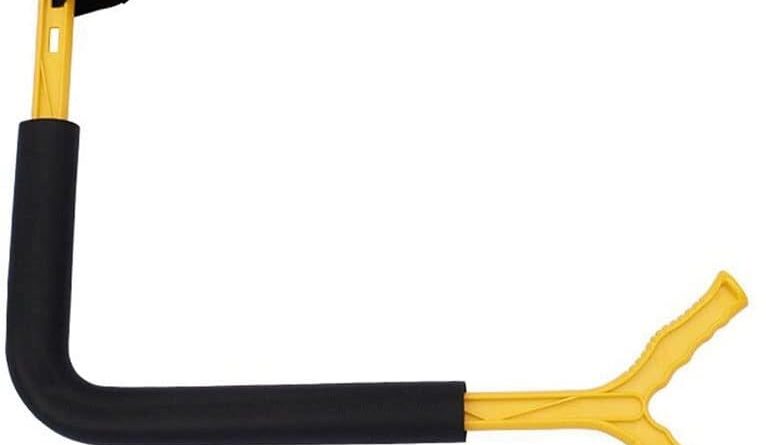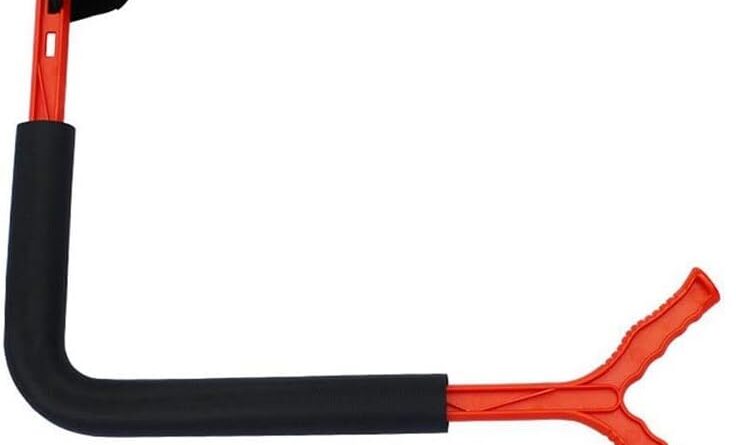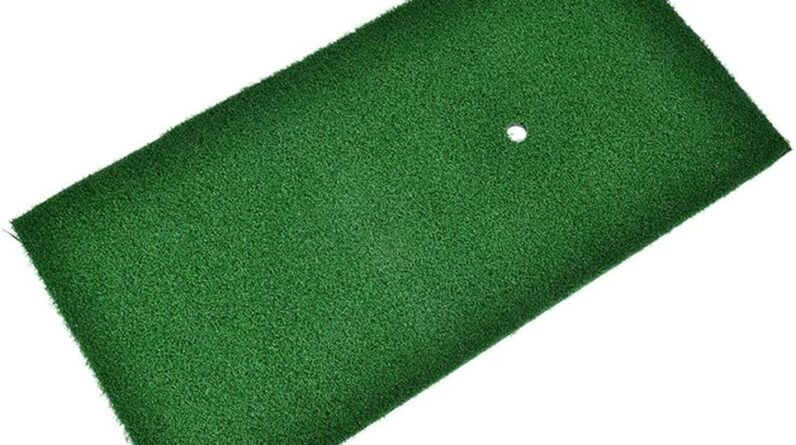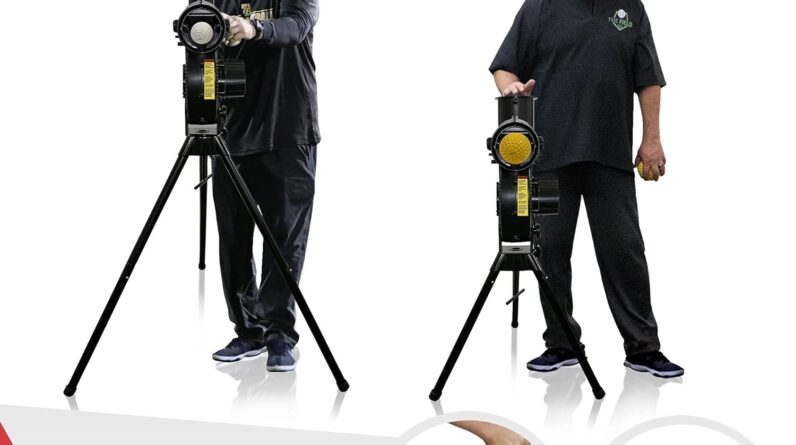Estimating club distances accurately is a crucial skill in golf, but it’s not as easy as it seems. In this article, you’ll discover the most common mistakes that golfers make when estimating their club distances. By avoiding these pitfalls, you can improve your game and have more confidence in your shot selection. Whether you’re a beginner or a seasoned golfer, understanding and overcoming these mistakes will undoubtedly help you hit the fairway with greater precision. So, let’s explore the fascinating world of club distance estimation and how to avoid the most prevalent errors that can throw off your game.
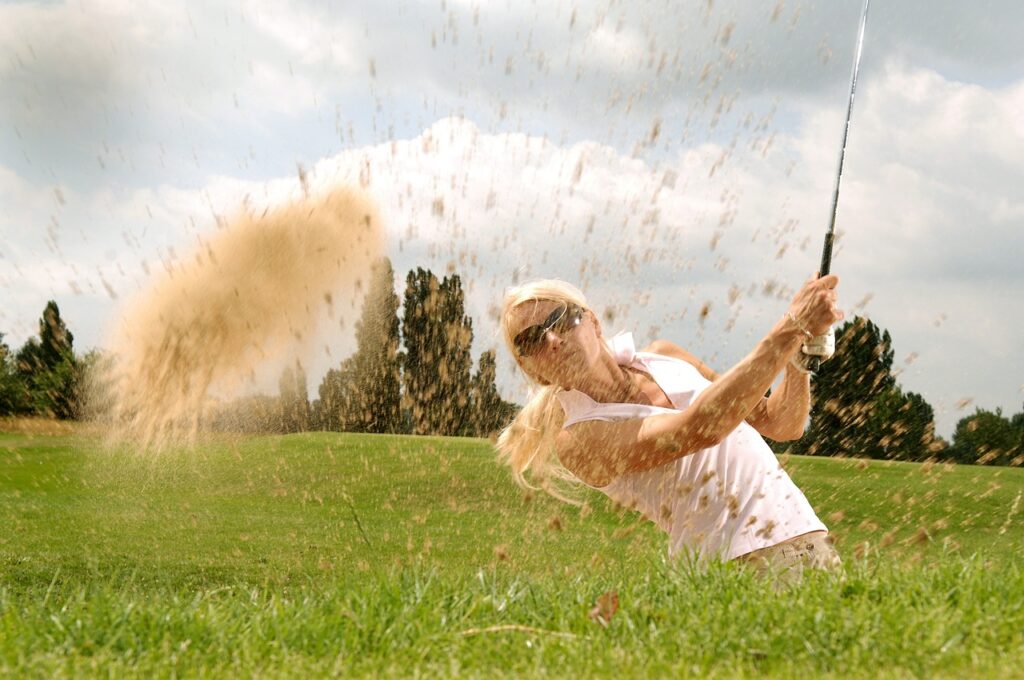
Not Knowing Your Own Distances
One of the most common mistakes golfers make when estimating club distances is not knowing their own distances. It is crucial to have a good understanding of how far you can hit each club in your bag. Without this knowledge, you are essentially guessing the distance to the green or other targets on the course.
To avoid this mistake, it is important to spend time on the driving range and track your shots. Take note of how far each club goes and the consistency of your distances. This will give you a better understanding of your own personal distances and help you make more accurate club selections on the course.
Not Tracking Your Shots
Another mistake many golfers make is not tracking their shots. Without keeping a record of where your shots land, it can be difficult to gauge your distances accurately. By tracking your shots, you can identify patterns and tendencies in your game. This will allow you to make adjustments and improve your club selection for different shots.
There are various ways to track your shots, from using a smartphone app to simply jotting down notes on a scorecard. Find a method that works best for you and make it a habit to track your shots during practice rounds and actual rounds.
Ignoring Environmental Factors
Too often, golfers disregard the impact of environmental factors on their club distances. Things like wind, temperature, and altitude can significantly affect how far your shots travel. Ignoring these factors can lead to misjudging the distance and ultimately making poor club selections.
It is important to consider the wind direction and speed when calculating distances. A strong headwind can reduce the distance your ball travels, while a tailwind can add distance. Additionally, colder temperatures can cause the ball to fly shorter and higher, while warmer temperatures can result in longer shots. Finally, playing at higher altitudes can make shots travel farther due to the thinner air.
Using Inconsistent Swing Speed
Having an inconsistent swing speed can also lead to inaccurate club distances. If your swing speed varies from shot to shot, it can be challenging to predict how far each shot will go. This inconsistency can be caused by a variety of factors, such as poor technique, lack of physical conditioning, or mental distractions.
To address this issue, it is important to work on your swing mechanics and develop a consistent swing speed. This can be achieved through lessons with a golf instructor, practice on the driving range, and physical conditioning exercises. By improving your swing consistency, you will have a better chance of accurately estimating your club distances.
Relying on Manufacturer’s Specifications
Many golfers rely solely on the manufacturer’s specifications when estimating club distances. While these specifications can provide a general idea of how far a club should travel, they do not account for individual swing characteristics and variations in club performance.
To avoid this mistake, it is important to understand and account for your own swing characteristics. Factors such as swing speed, tempo, and launch angle can all impact how far your shots go with a particular club. Additionally, clubs can vary in performance even within the same model and brand. Therefore, it is essential to test your clubs and make adjustments based on your own personal experiences.
Not Accounting for Personal Swing Characteristics
Failing to account for personal swing characteristics is another common mistake when estimating club distances. Each golfer has a unique swing, and this can significantly impact how far the ball travels with each club. Factors such as swing speed, swing path, and angle of attack all play a role in determining club distances.
To overcome this mistake, it is important to analyze your own swing characteristics. Consider taking lessons with a golf instructor who can help you identify any swing flaws or inefficiencies that could be affecting your distances. By understanding your swing and making necessary adjustments, you can improve your ability to estimate club distances accurately.
Not Considering Club Variabilities
Not considering club variabilities is another mistake that can lead to inaccurate club distances. Even clubs of the same model and brand can have slight variations in performance. Factors such as shaft characteristics, clubhead design, and even manufacturing tolerances can all affect how a club performs and how far the ball travels.
To combat this mistake, it is important to test your clubs and understand their specific characteristics. Take the time to hit various shots with each club and note any differences in distance or ball flight. This will allow you to make more informed club selections on the course and compensate for any potential variations in performance.
Not Adjusting for Elevation
Neglecting to adjust for elevation can be a significant mistake when estimating club distances. The altitude of the golf course can greatly impact how far your shots travel. Failing to take this into account can lead to underestimating uphill shots and overestimating downhill shots.
When playing on an uphill hole, the ball will not travel as far as it would on a flat hole. This is due to the increased gravitational force and the added challenge of hitting shots into an incline. On the other hand, downhill shots can be deceptive, as the ball can travel much farther than expected due to the assistance of gravity.
To avoid these mistakes, it is important to factor in the elevation changes on the golf course. Take note of the uphill and downhill slopes and adjust your club selection accordingly. This will help you accurately estimate your club distances and make more effective shots.
Underestimating Uphill Shots
One common mistake golfers make is underestimating the distance of uphill shots. When faced with an uphill approach shot, it is essential to account for the added difficulty of hitting into an incline. Because the ball must fight against gravity, it will generally travel a shorter distance than on a flat surface.
To avoid underestimating uphill shots, it is crucial to adjust your club selection accordingly. Choose a club that will allow you to reach the desired distance. Additionally, be mindful of the increased challenge of hitting uphill shots and make any necessary adjustments to your swing and shot strategy.
Overestimating Downhill Shots
Overestimating the distance of downhill shots is another common mistake made by golfers. When hitting shots downhill, the ball can benefit from the assistance of gravity, resulting in longer distances than on a flat surface. However, it is important not to get carried away and overestimate how far the ball will travel.
To avoid this mistake, it is crucial to assess the downhill slope and adjust your club selection accordingly. Be conservative in your estimates and choose a club that will allow you to control the distance while taking the slope into account. By doing so, you can avoid hitting the ball too far and potentially finding yourself in a challenging position on the course.
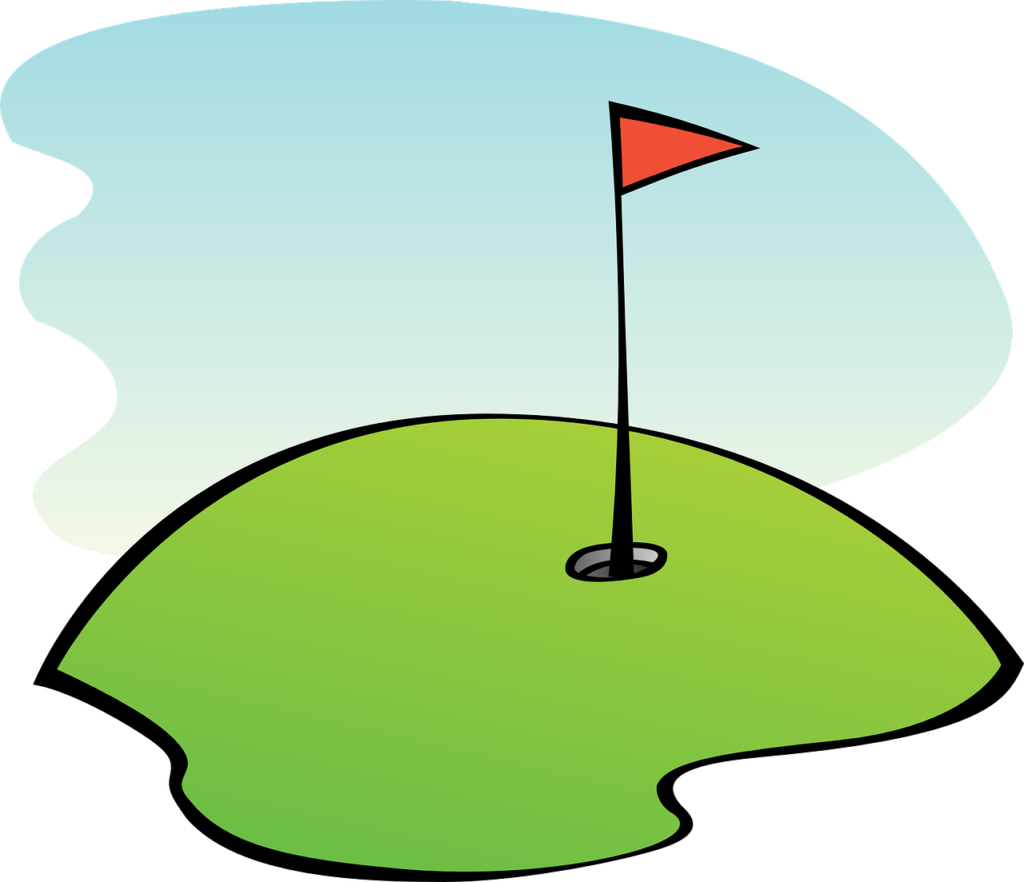
Neglecting Wind Conditions
Neglecting to consider wind conditions is a common mistake that can greatly impact club distances. The wind can have a significant effect on how far the ball travels, and failing to account for it can lead to inaccurate estimations.
When faced with windy conditions, it is important to factor in both wind direction and speed. A strong headwind can significantly reduce the distance your shots travel, while a tailwind can add distance. Additionally, crosswinds can affect the trajectory and direction of your shots, requiring adjustments to your aim and club selection.
To avoid neglecting wind conditions, it is crucial to observe and assess the wind throughout your round. Pay attention to flags, trees, and other indicators that can help you gauge the wind direction and strength. Adjust your club selection and shot strategy accordingly to compensate for the impact of the wind.
Not Factoring in Wind Direction
Not factoring in wind direction is a specific mistake that can lead to inaccurate club distances. The direction of the wind can greatly affect the trajectory and distance of your shots, and failing to consider it can result in poor shot execution.
To avoid this mistake, it is important to take note of the wind direction before each shot. Determine whether it is a headwind, tailwind, or crosswind, and think about how it will impact the flight of your ball. Adjust your aim and shot strategy accordingly to compensate for the wind and improve your chances of hitting accurate shots.
Underestimating the Impact of Wind Speed
Underestimating the impact of wind speed is another mistake that can lead to inaccurate club distances. The speed of the wind can have a significant effect on how far the ball travels, and failing to account for it can result in underestimating or overestimating distances.
To avoid this mistake, it is crucial to gauge the wind speed before each shot. Pay attention to how the wind feels on your face, watch for flags or vegetation moving, and consider any other visual cues that can indicate the wind speed. Adjust your club selection and shot strategy accordingly to compensate for the impact of the wind and make more accurate shots.
Overreliance on Distances Hit on the Driving Range
Many golfers make the mistake of overrelying on the distances they hit on the driving range when estimating club distances on the course. While the driving range can provide you with a good idea of your general distances, it does not replicate the conditions and variables you will encounter during an actual round.
One common factor to consider is that driving ranges often have optimal conditions for hitting long shots. The flat terrain, well-manicured grass, and lack of obstacles can all contribute to increased distances. However, the real course may have varying elevations, rough terrain, and other obstacles that can affect club distances.
To avoid this mistake, it is important to keep in mind that the driving range is just a practice area. While it can give you a general sense of your capabilities, it is essential to adjust your estimates and club selections based on the actual course conditions and variables.
Benefiting from Optimal Conditions on the Range
On the driving range, you may often benefit from optimal conditions that enhance your club distances. The flat terrain and well-groomed grass provide an ideal environment for long shots. Additionally, the absence of obstacles such as trees or bunkers allows for a clear path to the target.
While it is enjoyable to hit long shots on the range, it is important to remember that real course conditions may differ significantly. To avoid the mistake of relying too heavily on driving range distances, it is crucial to practice on the actual course as well. This will allow you to adapt to the various challenges and variables you will encounter during your rounds.

Neglecting Real Course Variables
Neglecting real course variables is a mistake that can lead to inaccurate club distances. The golf course is a dynamic environment with varying terrain, obstacles, and weather conditions. Failing to consider these variables can result in misjudged club selections and suboptimal shots.
To avoid this mistake, it is important to take the time to assess the course conditions before each shot. Consider factors such as rough length and thickness, lie conditions, and the firmness or softness of the greens. Additionally, take note of any obstacles such as trees, bunkers, or water hazards that may affect your shot strategy.
By actively considering these variables, you can make more informed decisions when estimating club distances and selecting the appropriate club for each shot. This will increase your chances of hitting accurate shots and achieving better results on the course.
Misinterpreting Shot Shape and Ball Flight
Misinterpreting shot shape and ball flight is a common mistake that can lead to inaccurate club distances. The way the ball curves and moves through the air can provide valuable information about its trajectory and potential distance. Failing to understand these elements can result in misjudged club selections and poor shot execution.
One common mistake is ignoring the effects of draw or fade. Some golfers may unintentionally overlook the natural tendencies of their shots and fail to adjust their aim and club selection accordingly. Understanding how your shots typically curve will allow you to make the necessary adjustments to compensate for these ball flights.
Additionally, misreading side winds can also lead to inaccurately estimating club distances. Crosswinds can affect the trajectory and direction of your shots, making it crucial to consider their impact during shot selection. Taking into account the direction and strength of any side winds will help you adjust your aim and select the appropriate club to compensate for their influence.
Failing to Take Into Account Course Conditions
Failing to take into account course conditions is another mistake that can affect club distances. The condition of the rough and lie, as well as the firmness or softness of the greens, can impact how the ball behaves upon landing. Ignoring these factors can lead to miscalculations and suboptimal shot results.
Misjudging the rough and lie conditions can make it difficult to control the distance and accuracy of your shots. Long and thick rough will require more club and force you to consider how it will affect the flight of your ball. Similarly, the firmness or softness of the greens can significantly influence how the ball reacts upon landing, affecting roll-out and stopping power.
To avoid this mistake, it is important to assess the course conditions and adjust your club selection and shot strategy accordingly. Familiarize yourself with the rough length and texture, as well as the consistency of the greens. By considering these factors, you can make more accurate estimations of club distances and achieve better shot outcomes.
Not Adjusting for Firm or Soft Greens
Not adjusting for firm or soft greens is a specific mistake that can lead to inaccurate club distances. The consistency of the greens can greatly impact how the ball reacts upon landing, affecting the distance and accuracy of your shots.
When playing on firm greens, the ball will tend to roll out more upon landing. This means that you need to take into account the additional distance your shots will travel after hitting the green. On the other hand, soft greens can cause the ball to stop quickly upon landing, resulting in shorter distances.
To avoid this mistake, it is crucial to assess the firmness or softness of the greens before each shot. Observe how the ball reacts upon landing to determine whether the greens are firm or soft. Adjust your club selection and shot strategy accordingly to compensate for these variables and make more accurate shots.
Inconsistent or Faulty Club Selection
Inconsistent or faulty club selection is a mistake that can lead to inaccurate club distances. Choosing the wrong club for a particular shot can result in suboptimal outcomes and unnecessary strokes.
One common mistake is not having properly gapped clubs. If there are significant yardage overlaps or gaps between your clubs, it can be challenging to select the appropriate club for certain distances. This can lead to inconsistency and misjudgment of club distances.
To avoid this mistake, it is important to evaluate your club set and ensure that there is a proper distribution of distances between each club. This will allow you to have more consistent yardage gaps and make more accurate club selections based on the required distance for each shot.
Ignoring shot types and strategies is another mistake that can impact club distances. Different shots, such as a full swing, pitch, or chip, require different club selections and strategies. Failing to consider these variables can lead to misjudged distances and poor execution.
When deciding on a club for a particular shot, it is important to consider the shot type and the desired outcome. Assess the situation and determine whether a full swing, pitch, or chip is appropriate. Additionally, think about the potential obstacles and hazards that may come into play and adjust your shot strategy accordingly.
By selecting the appropriate club for different shot types and implementing effective strategies, you can improve your ability to estimate club distances accurately and achieve better results on the course.
Not Having Properly Gapped Clubs
Not having properly gapped clubs is a specific mistake that can impact club distances. If there are significant overlaps or gaps between your clubs, it can be challenging to select the appropriate club for different distances.
To avoid this mistake, it is crucial to evaluate your club set and ensure that there is a proper distribution of distances between each club. This can be achieved by considering factors such as loft, length, and clubhead design. By having properly gapped clubs, you will have more consistency in your distances and be able to make more accurate club selections on the course.
Ignoring Shot Types and Strategies
Ignoring shot types and strategies is another mistake that can affect club distances. Different shots require different club selections and strategies based on the desired outcome. Failing to consider these variables can lead to misjudged distances and poor execution.
When choosing a club for a specific shot, it is important to consider the shot type and the desired trajectory. Assess the situation and determine whether a full swing, pitch, or chip is appropriate. Additionally, think about the potential obstacles, hazards, and green conditions that may come into play. Adjust your shot strategy accordingly to give yourself the best chance of success.
By taking into account different shot types and implementing effective strategies, you can improve your ability to estimate club distances accurately and make better decisions on the course.
Not Considering Physical and Mental Factors
Not considering physical and mental factors is a mistake that can impact club distances. Fatigue, energy level, focus, and mental preparation all play a role in your ability to make accurate estimations and execute shots effectively.
Fatigue and energy level can greatly influence your swing speed and overall performance. If you are tired or low on energy, it can be challenging to generate the necessary power and consistency needed to hit accurate shots. Similarly, lack of focus and mental preparation can result in suboptimal shot execution and misjudged distances.
To avoid this mistake, it is important to take care of your physical and mental well-being on the course. Get plenty of rest, stay hydrated, and fuel your body with proper nutrition. Additionally, develop pre-shot routines and mental strategies to ensure you are focused and mentally prepared for each shot. By considering these factors, you can improve your ability to estimate club distances accurately and make better shots on the course.
Fatigue and Energy Level
Fatigue and energy level can greatly impact your ability to estimate club distances accurately. When you are tired or low on energy, it can be challenging to generate the required power and consistency in your swing.
To avoid this mistake, it is important to prioritize rest and recovery. Get enough sleep each night and avoid overexerting yourself before rounds. Additionally, fuel your body properly with nutritious food and stay hydrated throughout your round. By taking care of your physical well-being, you can improve your energy levels and enhance your ability to make accurate estimations of club distances.
Lack of Focus and Mental Preparation
Lack of focus and mental preparation is another factor that can affect club distances. If you are not fully present in the moment or mentally prepared for each shot, it can impact your decision-making and execution.
To overcome this mistake, it is important to develop pre-shot routines and mental strategies. Take the time to visualize your intended shot, focus on your target, and clear your mind of any distractions. Additionally, practice mindfulness techniques to stay present and focused throughout your round. By developing these mental habits, you can improve your ability to estimate club distances accurately and make better shots on the course.
Lack of Practice and Experience
Another mistake that can impact club distances is a lack of practice and experience. Golf is a game that requires time, dedication, and repetition to develop a good understanding of your own distances and shot-making abilities.
Insufficient time spent on the course can lead to limited exposure to different situations and variables that can affect club distances. Additionally, not analyzing past rounds and learning from your successes and failures can hinder your ability to make accurate estimations.
To avoid this mistake, it is essential to dedicate time to practice and gain experience on the course. Regularly play rounds and take note of the distances you hit with each club. Analyze your performance, identify patterns, and make adjustments accordingly. By consistently practicing and gaining experience, you can improve your ability to estimate club distances accurately and make better shot selections.
Insufficient Time Spent on Course
Insufficient time spent on the course is a specific mistake that can impact club distances. Without regular exposure to different situations on the course, it can be challenging to develop a good understanding of your own distances and shot-making abilities.
To overcome this mistake, it is important to prioritize playing rounds regularly. The more time you spend on the course, the more opportunities you have to assess different situations, variables, and conditions that can affect club distances. Take note of the distances you hit with each club in various scenarios and adjust your club selection accordingly. By investing sufficient time on the course, you can develop a better sense of your own distances and improve your ability to make accurate estimations.
Not Analyzing Past Rounds
Not analyzing past rounds is another factor that can impact club distances. Each round presents an opportunity to learn from your successes and failures, and failing to analyze your performance can hinder your ability to make accurate estimations.
To avoid this mistake, it is important to review your past rounds and assess your club distances. Identify patterns and tendencies in your game and make note of the distances you hit with each club in different situations. Additionally, evaluate the factors that may have influenced your performance, such as wind conditions, elevation changes, or course conditions. By analyzing your past rounds, you can gain valuable insights that will help you make more accurate estimations of club distances in future rounds.
In conclusion, there are several common mistakes that can affect the accuracy of estimating club distances in golf. Not knowing your own distances, not tracking your shots, ignoring environmental factors, using inconsistent swing speed, relying solely on manufacturer’s specifications, not accounting for personal swing characteristics, not considering club variabilities, neglecting to adjust for elevation, neglecting wind conditions, overreliance on distances hit on the driving range, misinterpreting shot shape and ball flight, failing to take into account course conditions, inconsistent or faulty club selection, not considering physical and mental factors, lack of practice and experience, and not analyzing past rounds. By being aware of these mistakes and implementing the suggested solutions, you can improve your ability to estimate club distances accurately and make more informed decisions on the golf course. So, take the time to track your shots, consider environmental factors, adjust for elevation and wind conditions, understand your own swing characteristics, evaluate course conditions, choose clubs with proper gaps, and take into account physical and mental factors. With practice and experience, you will become more proficient at estimating club distances and achieve better results in your golf game.


